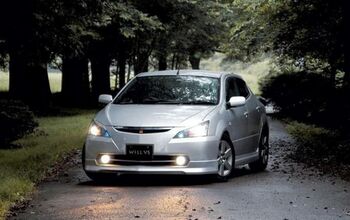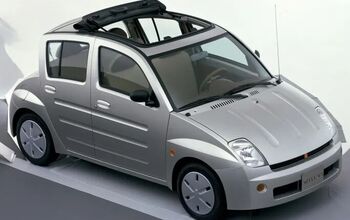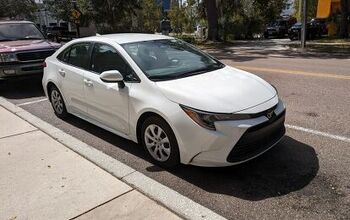Abandoned History: The Early 2000s WiLL Project, for The Youths (Part I)

Today’s Abandoned History story is one of targeted marketing. In the early 2000s, an amalgam of Japanese corporations combined efforts to reach out to younger consumers via unified branding. Cars, food, appliances – all across Japan new, youth-focused products all wore the same sub-brand: WiLL.
Collectively WiLL asked, “How do you do, fellow kids?”
The WiLL marketing project started in August 1999 and ran through July 2004. Seven Japanese companies banded together in a concerted effort to attract the yen of young people. While the WiLL project became known mostly for its resultant cars, those were just the most costly products from the project.
WiLL offered food, paper and office goods, tourist attractions, consumer electronics, alcohol, and home goods in addition to cars. Beer producer Asahi marketed three new types of alcohol under the WiLL brand. They were joined by candy maker Ezaki Glico, who made their own WiLL candies and chocolates. WiLL products wore the effort’s unified logo, a small (usually) orange square.
On the home goods and electronics front, Panasonic and Kao Corporation offered exciting new WiLL products. Kao produced three WiLL-branded air fresheners, while Panasonic offered 14 different consumer goods under WiLL. Said goods appealed to younger consumers of different ages and incomes, as they ranged from fax machines to microwaves, fridges, washing machines, and even a collapsible bike. Consumers of the WiLL Panasonic fax machine might have filled it with new WiLL stationary and used the assorted pens offered by Kokuyo. Kokuyo is an office furniture and paper producer.
There were also WiLL-branded services offered by the Kinki Nippon Tourist company. Kinki created tours exploring different parts of Japan that were designed specifically for younger consumers. Tours took place in Kyushu, Okinawa, Hokkaido, and there was a general “Sports Tour” as well.
Finally, there were the most expensive WiLL products: A series of four different Toyota compacts intended to draw upon the styling of extant vehicles, and appeal almost exclusively to a younger audience. All of the WiLL cars looked very different from one another, and none were produced for very long.
The WiLL project was created based on an engineering theory called Kansei. The principle of Kansei is to develop or improve consumer products and services by understanding and incorporating a consumer’s psychological wants and needs into a product’s design. With this methodology, Kansei engineering can create products that drive an intended feeling within the consumer and generate sales. With WiLL, the desired feeling was “This is made just for me as a young consumer.”
So did it work? Yes and no, mostly no. The WiLL products had varying success generating buzz in the Japanese market, but the cars, in particular, were underwhelming where sales were concerned. Having said that, some WiLL products are still around today. There was another, simultaneous Kansei project in Japan that most certainly had a direct effect on the North American automotive landscape, it just took a while. Not much car talk this time (gasp!), but we’ll get to that in Part II.
[Images: Panasonic, Toyota, Kokuyo, Kao, Asahi]

Interested in lots of cars and their various historical contexts. Started writing articles for TTAC in late 2016, when my first posts were QOTDs. From there I started a few new series like Rare Rides, Buy/Drive/Burn, Abandoned History, and most recently Rare Rides Icons. Operating from a home base in Cincinnati, Ohio, a relative auto journalist dead zone. Many of my articles are prompted by something I'll see on social media that sparks my interest and causes me to research. Finding articles and information from the early days of the internet and beyond that covers the little details lost to time: trim packages, color and wheel choices, interior fabrics. Beyond those, I'm fascinated by automotive industry experiments, both failures and successes. Lately I've taken an interest in AI, and generating "what if" type images for car models long dead. Reincarnating a modern Toyota Paseo, Lincoln Mark IX, or Isuzu Trooper through a text prompt is fun. Fun to post them on Twitter too, and watch people overreact. To that end, the social media I use most is Twitter, @CoreyLewis86. I also contribute pieces for Forbes Wheels and Forbes Home.
More by Corey Lewis
Latest Car Reviews
Read moreLatest Product Reviews
Read moreRecent Comments
- Honda1 Unions were needed back in the early days, not needed know. There are plenty of rules and regulations and government agencies that keep companies in line. It's just a money grad and nothing more. Fain is a punk!
- 1995 SC If the necessary number of employees vote to unionize then yes, they should be unionized. That's how it works.
- Sobhuza Trooper That Dave Thomas fella sounds like the kind of twit who is oh-so-quick to tell us how easy and fun the bus is for any and all of your personal transportation needs. The time to get to and from the bus stop is never a concern. The time waiting for the bus is never a concern. The time waiting for a connection (if there is one) is never a concern. The weather is never a concern. Whatever you might be carrying or intend to purchase is never a concern. Nope, Boo Cars! Yeah Buses! Buses rule!Needless to say, these twits don't actual take the damn bus.
- MaintenanceCosts Nobody here seems to acknowledge that there are multiple use cases for cars.Some people spend all their time driving all over the country and need every mile and minute of time savings. ICE cars are better for them right now.Some people only drive locally and fly when they travel. For them, there's probably a range number that works, and they don't really need more. For the uses for which we use our EV, that would be around 150 miles. The other thing about a low range requirement is it can make 120V charging viable. If you don't drive more than an average of about 40 miles/day, you can probably get enough electrons through a wall outlet. We spent over two years charging our Bolt only through 120V, while our house was getting rebuilt, and never had an issue.Those are extremes. There are all sorts of use cases in between, which probably represent the majority of drivers. For some users, what's needed is more range. But I think for most users, what's needed is better charging. Retrofit apartment garages like Tim's with 240V outlets at every spot. Install more L3 chargers in supermarket parking lots and alongside gas stations. Make chargers that work like Tesla Superchargers as ubiquitous as gas stations, and EV charging will not be an issue for most users.
- MaintenanceCosts I don't have an opinion on whether any one plant unionizing is the right answer, but the employees sure need to have the right to organize. Unions or the credible threat of unionization are the only thing, history has proven, that can keep employers honest. Without it, we've seen over and over, the employers have complete power over the workers and feel free to exploit the workers however they see fit. (And don't tell me "oh, the workers can just leave" - in an oligopolistic industry, working conditions quickly converge, and there's not another employer right around the corner.)





































Comments
Join the conversation
WiLL was such a roaring success they decided to proceed with Scion anyways. The Japanese consumer is very different from the American perhaps they though. The WiLL VS was an awesome car. Too bad they didn’t bring those to the US.
If only they could have gotten WiLL Smith as their spokesman, maybe it could have worked.